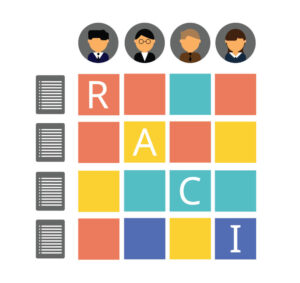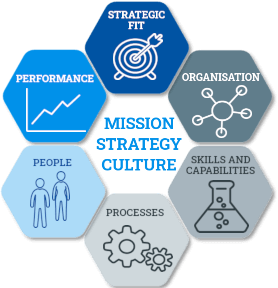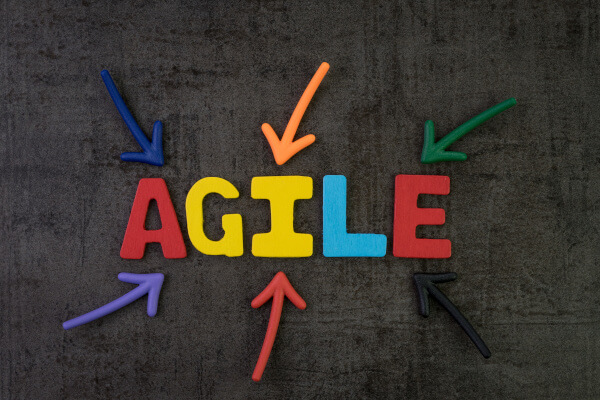How to unblock your organisation for innovation success
You can have the best innovation practices in the world, but if your roles and responsibilities aren’t clear, you’ll struggle to deliver to your full potential. Your innovation will take longer, effort will skyrocket and frustration will mount.
What will this article cover?
I’m looking here at how to be clear about the roles and responsibilities of innovation. The “who does what”, the simple things that can help or hinder your delivery, rather than macro-level organisational structures.
Why Clarity Matters
Clarity on the who does what can significantly improve how well you deliver innovation, but surprisingly many companies have issues with this.
Here’s how to spot if your company needs to shake up its innovation organisation – if you hear these telltale phrases around your workplace, you may have issues with roles and responsibilities:

“Who does…?”
The indicator I’ve encountered the most is the “who does…?” discussion. You’ll know them when you hear them. Examples include “Who needs to approve this change to our project?”, “Who decides team membership?”, “Who approves this expenditure?”.
Questions like these signal wasted time and stalled innovation; your innovation people are trying to understand how to move innovation along, rather than actually delivering it.

“Innovation is an R&D thing.”
When innovation is exclusively handled by R&D, R&D people can end up trying to do everything – including tasks they are absolutely NOT experts in such as understanding consumers or customers, building business cases, finding suppliers or reviewing regulatory aspects.
In the best case, the R&D team can be helped by the real experts, but this is highly inefficient, mistakes can be made and opportunities can be missed. If your company is serious about commercialising the fruits of R&D work, the other functions inevitably need to take full ownership of their tasks at some stage, so why not start early?

“That’s not my job!”
Leaving even just one key function out of innovation will cripple your delivery. for example, it’s slow and painful to set up and run factory trials when the people in the manufacturing team don’t consider they have a role to play in new product development.

“Is that my job?”
Even if roles and responsibilities are clear on paper, they are useless if people are not aware of them, don’t acknowledge them or don’t understand them. The more the roles live in the hearts and minds of key players, the smoother and faster your innovation delivery.

“That’s not my priority.”
Clear roles mean nothing if innovation isn’t prioritised in a balanced way across your company. People can know what they should be doing, but if they don’t have the time, the means, or the support of their boss, they won’t be able to deliver. This is particularly the case if innovation is only a small part of their day-job.

“That’s my job, not yours!”
Poorly defined roles lead to turf wars. Who decides if a product is market-ready? Sales? Marketing? R&D? Quality? Without clarity, you get endless debates and delays.
If you recognise any of these situations, you may need to clarify your organisation’s roles and responsibilities.
How do you go about it?
Clarify the “who does what?” with RACI tables
RACI is an acronym for Responsible, Accountable Consulted and Informed and a RACI table describes how various roles participate in delivering tasks. RACI tables are used extensively in Project Management and you can find out more about them here[1, 2].

Note that RACI variants exist and you may find one of them meets your business needs better, though the methodology of building the table is the same.
A well-designed RACI table is the best tool for formally setting innovation roles and responsibilities. I won’t go into the details of how to build your own, but I do have some tips for you.
Three tips for building and using RACI tables
When building a RACI table involve the people who will actually use the table, either in the design or the validation of the design. Take the time to explain the roles and responsibilities to colleagues. It’s one thing to have a nice-looking table, but quite another to have people understanding and adhering to the roles and responsibilities it describes.
Try to be as comprehensive as possible when building your RACI tables. If you cover 80% of the tasks and roles, the remaining 20% will still be unclear and could slow down your innovation delivery.
Remember, RACI (or variants of RACI) can be used for :
Project teams (project leader, team member)
Experts (legal, regulatory)
Governance roles (steering committee, portfolio review, board)
Functional roles (functional heads and business heads)
Don’t try to make one huge RACI table that covers everything. It’s much better to make several, simpler tables each targeted at specific processes.
Beyond individual roles
Clarifying roles and responsibilities and aligning objectives is important at individual level, but it’s also important that you do this for key groups and business functions in your company too.
You may not need a full RACI, but a applying a similarly-structured approach to defining “who does what?” between organisational units will help enormously. For example, who decides whether to launch your new global product in North America or not? Is it the Global Category or the North American Business?
This is particularly important when your company uses a matrix organisational structure[3, 4] and the notions of functional and hierarchical reporting lines are added to the mix.
Summing it up…
Unclear roles and responsibilities slow down innovation, waste time and cause frustration throughout your company. The good news is the tried and tested RACI method is perfect for getting the clarity you’ll need, whether at individual level, or at the level of business functions. To get it right, target your RACI tables, involve the users and don’t leave gaps or grey areas.




